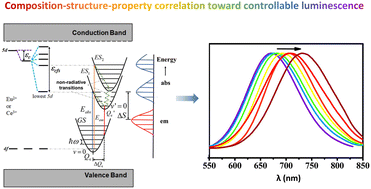Advanced Functional Materials, 2023, 01, https://doi.org/10.1002/adfm.202209275
Mechanoluminescence (ML), as an optical response to deformation stimuli, shows great potential in high-end stress sensing, ultrasonic field visualization, and multidimensional anti-counterfeiting. However, processive practical applications in bio-medicine are constrained by the discovery of near-infrared (NIR) ML materials. Unlike lanthanides (Ln3+) with sharp multiplets, two kinds of Cr3+-doped NIR ML materials, gallate spinel (ZnGa2O4:Cr3+, Zn3Ga2GeO8:Cr3+) and gallate magnetoplumbite (SrGa12O19:Cr3+) are here reported. Owing to the intrinsic cation antisite defects and cation vacancies in the matrix, these materials exhibit bright NIR ML under a relatively low load (20 N). In particular for SrGa12O19:Cr3+ (750 nm, peak; 100 nm, FWHM) with low persistent luminescence (PersL) interference, the ML behavior can be further rejuvenated under UV and sunlight irradiation. SrGa12O19:Cr3+ also shows bright NIR emission under photo- and thermo-stimulation. Owing to their excellent tissue penetration and concealment capability, NIR ML materials show great potential in the fields of bio-medicine and anti-counterfeiting.






